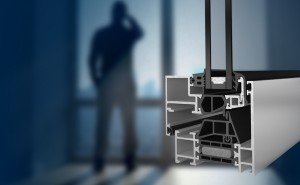The climate agreements signed in Kyoto and Paris regularly show up in the news, but it’s easy to feel like they are someone else’s responsibility. In actual fact, everyone can contribute to meeting the climate targets. How? By ensuring proper window insulation, for example.

Window insulation contributes to Paris climate targets
The United Nations put the climate change issue on the agenda in 1994. It was a revolutionary idea back then, as there was hardly any substantiated scientific evidence. At that time, 195 countries and the European Union committed to “stabilize greenhouse gas concentrations in the atmosphere at a level that would prevent dangerous anthropogenic interference with the climate system” by signing an international environmental treaty, the United Nations Framework on Climate Change (UNFCCC), which could be considered the first climate agreement. The UNFCCC served as the basis for the accords reached in Kyoto and Paris.
Kyoto
In the years following the UNFCCC, scientists provided more and more evidence that the climate was changing, confirming the role that humans played. This body of evidence led to the Kyoto Agreement, named after the Japanese city where the treaty was signed in 1997. 192 countries proved willing to set targets for limiting greenhouse gas emissions. The ratification process was complex and difficult – the US initially refused to participate – so the treaty only took effect in 2005. Despite the addition of the Doha amendment (in 2012) with more ambitious targets, the Kyoto targets were still very non-committal.
Paris
The UN felt an urgent need to establish a universal, legally binding environmental treaty defining climate targets for all countries. The treaty it envisioned was introduced in autumn 2016 in the form of the Paris Agreement. The main goal was to limit the global temperature rise in the 21st century to less than 2°C, and preferably to no more than 1.5°C; this lower threshold temperature is crucial to the safety of the polar regions, coral reefs, and lowest-lying islands and coastal areas. Proposed methods to reach this goal include reducing greenhouse gas emissions, promoting the use of renewable energy, increasing energy efficiency, and developing low-carbon technology. All countries are required to submit a climate plan detailing concrete measures by 2018.
Global efforts
169 countries ratified the Paris Climate Agreement, including some of the biggest polluters. China, responsible for a quarter of greenhouse gas emissions worldwide, has committed to reduce its emissions by over 60% before 2030, compared to 2005 levels. The European Union is aiming for a reduction of 40% before 2030, compared to 1990 levels. Good news, but it is clear that there is still a lot of room for improvement. Critics argue that the EU countries could do a lot more, and flat-out condemn environmental practices in Russia and Japan. And what about the USA? During Barack Obama’s presidency, observers indicated that they had come up with a “credible plan”. Donald Trump, the current American president, disagreed and decided to withdraw from the climate agreement.
Clearly, there is still a lot of work to do. Everyone can contribute, and many governments will help individuals do what they can. Scandinavian, German, Belgian and Dutch governments offer grants and subsidies to people who make climate-friendly investments, such as installing a solar boiler or better roof insulation. There are also subsidies for improving your window insulation. Grants and subsidies are offered for installing high-efficiency glass or triple glazing, as well as for optimising window profiles. For instance, people are strongly encouraged to install aluminium profiles insulated with a thermal break, which guarantee great insulation. If you partner with a company like Aluro, you can do your part to make sure that the targets of the Paris Climate Agreement are more than a pipe dream.
- Peter De Roovere



Leave a comment